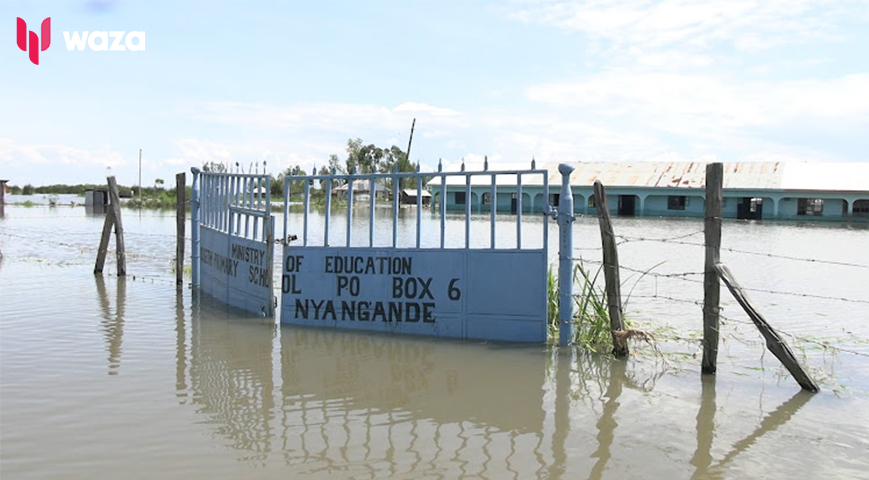The river Nyando burst its banks on Saturday night, forcing water to flow over the Ahero bridge and causing traffic jams for hours for drivers on the Kisumu–Nairobi highway.
Videos obtained by Waza News reveal congested traffic near the bridge while nearby residences, including the Ahero police station, are submerged underwater.
Alphonse Wambua, the commander of Kisumu County police, confirmed that they have received reports alleging that thugs have started robbing drivers of their valuables by taking advantage of the situation.
He said officers have been sent to the area to keep everyone calm. Drivers are looking for alternate routes to avoid the flooded area.

Did you read this?
The Timboroa area's portion of the Nakuru-Eldoret highway had been closed, but the Kenya National Highways Authority (KENHA) has announced its reopening. After a fissure appeared at the base of the road, it was closed.
The heavy rains persisted in many parts of Kenya, worsening the dire consequences.
According to government reports, as of Saturday, May 4, 2024, 219 people had died, 164 had allegedly been injured, and 72 remained missing.
According to Interior Cabinet Secretary (CS) Kithure Kindiki, 206,240 people have been affected by the relocation of 41,248 households.
He added that 115 camps had been established throughout 19 Counties, housing 27,856 people as of right now.

Nairobi, Nyeri, Muranga, Kirinyaga, Kiambu, Nyandarua, Nandi, Bomet, Nakuru, Elgeyo Marakwet, West Pokot, Baringo, Samburu, Turkana, Uasin Gishu, Laikipia, and Narok counties are among those predicted to continue having heavy rains.
The remaining counties are Marsabit, Embu, Embu, Homabay, Machakos, Embu, Vihiga, Busia, Bungoma, Trans Nzoia, Kisumu, Kisii, Nyamira, Migori, Siaya, and Homabay.









